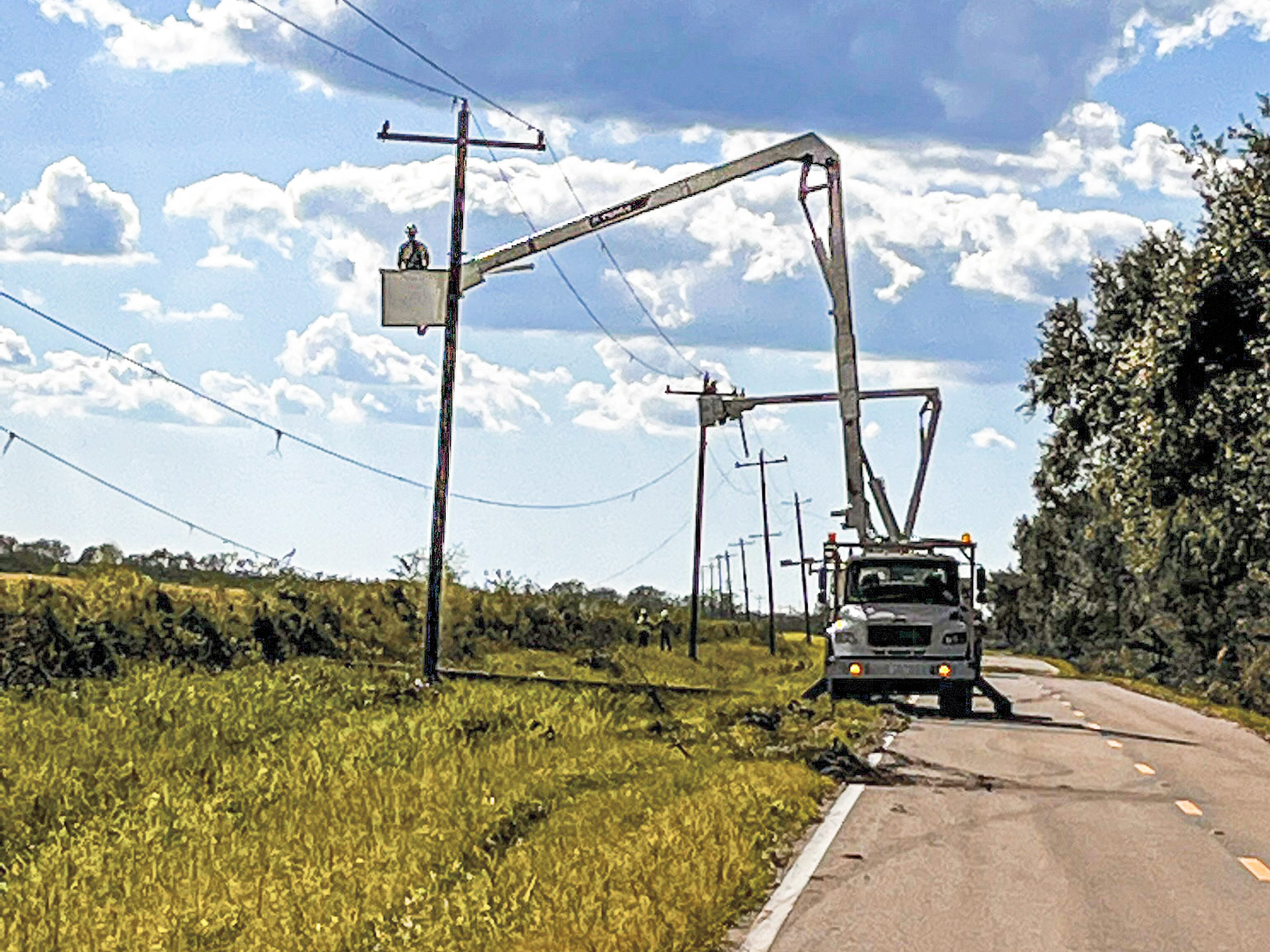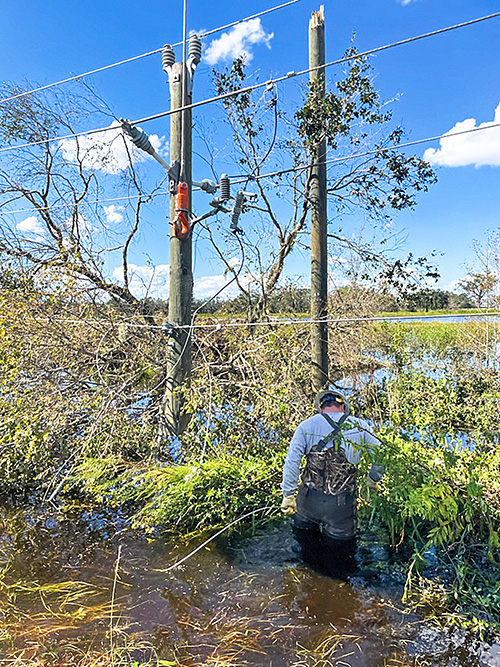CoServ’s first-hand account of Hurricane Ian restoration

From alligators and portable power generators to extreme heat, humidity and bugs, CoServ linemen faced a number of challenges and hazards while they worked to restore power after Hurricane Ian in Florida.
CoServ Employees restored power to 1,800 meters from two electric cooperatives during their nearly 2-week mutual aid trip to central and southern Florida.
“It’s a pretty good feeling when you’re driving out of a neighborhood that has lights that you put on. It’s like a victory parade. They’re clapping, they’re waving. You hear people in the background, “Thank you, Lord! We love you guys,” said Luke Hawkins, CoServ Linemen Crew Supervisor. “They’re offering meals, water, asking if you need your laundry done. They know you’re there to get their lights back on so they do whatever they can to make it hospitable.”'
The crews left in a convoy at 5 a.m. on Sept. 29 from CoServ headquarters in Corinth and arrived at Peace River Electric Cooperative (PRECO) in Wauchula, Florida two days later. After being released by PRECO on Oct. 5, CoServ crews headed farther south to the hard-hit Fort Myers area to assist Lee County Electric Cooperative. They started heading home Oct. 10 and everyone made it back safely on Oct. 11.
This is Luke’s 12th mutual aid deployment, but he said the destruction, especially in Fort Myers, was the worst he’s ever seen. He’s worked ice storms, wildfires and even Hurricane Katrina.

“They’d been without power for eight days when we arrived so they were extremely happy we were there,” Luke said. “They had a lot of damage. They were pretty overwhelmed, particularly, Pine Island and Sanibel Island where they still have months more work to do.”
Everywhere they looked in Lee County there were blue tarps on the roofs, fences were down, trees uprooted and the exterior of the houses were damaged. Beach side houses were totally demolished.
In Wauchula, CoServ crews donned waders to fix a broken pole in a heavily flooded area. Then they spotted the alligator floating nearby.
They had to wait until the alligator left the area to proceed and even then others kept watch to make sure it didn’t return. Replacing a submerged pole isn’t the norm but they were able to mark the location of the old pole, remove it, use an auger to clean out the hole and then drop a new pole into it, Luke said. A more permanent fix could wait until the water receded.
Coming face-to-face with an alligator is scary but it was actually the swarms of so-called “no-see-um” bugs that caused the biggest inconvenience, Luke said. The bugs flourished in the hot humid air after the hurricane and CoServ workers finished every day covered in bites.
Safety is a top priority for all CoServ Employees but especially when they’re working in the aftermath of a natural disaster on the scale of a major hurricane. The crews wear voltage detectors that alert them if a power line is carrying high voltage electricity.
The voltage detectors saved lives when they found a high-voltage line that was energized by a backup generator. While the generator only produces 240 volts to feed the house, the biggest danger comes if the electricity reaches the transformer, stepping up to a deadly 14,400 volts before it travels out on the same lines the linemen are working on.
“You’d hear the generator running and our voltage detector would be going off,” Luke said. “A transformer works both ways so the generator is a source that we have to really look out for when we’re working a storm restoration.”
They would ask to inspect a member’s generator and ask them to turn it off so they could work safely on the lines.
At night the CoServ crews gathered in massive camps with linemen from all over the country who had come to assist. The camp in Lee County had thousands of linemen – so many that their bucket trucks were parked several miles away and had to take a shuttle bus to the camp.
They slept in large air-conditioned trailers with 36 bunks each stacked three high.
“They’ve got curtains but it’s really like being in a Navy ship,” Luke said. “It’s tough.”
Luke said the most difficult part of the trip was the long drive home. The bigger bucket trucks can only go about two and a half hours before refueling and their speed is limited to 64 mph. That made for a long trip along the Gulf Coast back to Texas.
But Luke said he and the Employees – all of whom volunteered for the job – wouldn’t hesitate to do it again. Electric cooperatives have always been about helping others and this mutual aid is one of the most visible examples of that. CoServ Members should also know that if disaster ever strikes North Texas, other co-ops will rush to our aid in the same way.
“It feels good to help someone else out. People don’t realize how much they rely on electricity until they don’t have it,” Luke said. “If you go without for more than one or two days, think about what you’d have to do to survive or just to get by.”
